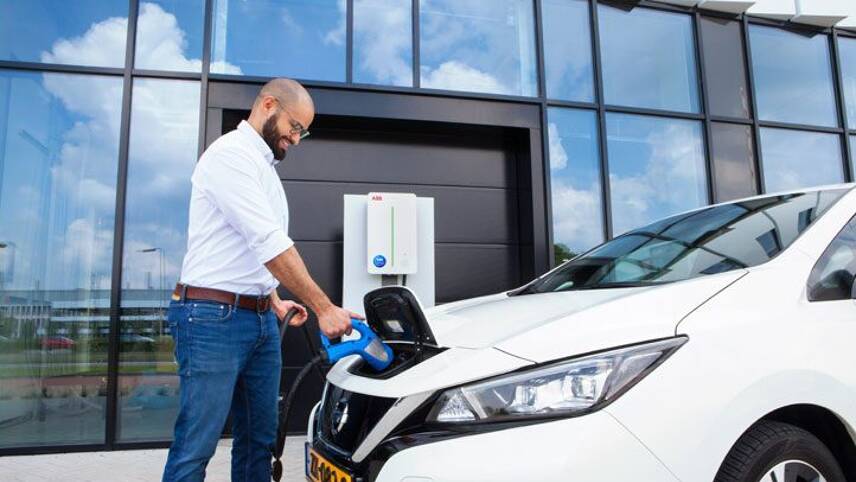Register for free and continue reading
Join our growing army of changemakers and get unlimited access to our premium content

According to EDF
Through its subsidiary DREEV, EDF has launched a commercial charging offering for businesses. It utilises V2G technology that allows for two-way energy flow; both recharging an EV’s battery when electricity is at its cheapest, and discharging excess energy to sell back into the grid.
The offering is available to businesses that have Nissan’s LEAF and e-NV200 models in their fleets, and includes the installation of a two-way connected compact 11kW charger. The charger can fully charge a Nissan LEAF, depending on the battery model, in just 3 hours and 30 minutes.
According to EDF, the offering would enable fleet customers to save around £350 in energy cost savings annually.
EDF’s interim head of EV projects Philip Valarino said: “Today’s announcement marks an important step on the UK’s journey towards electric mobility. By combining the expertise and capabilities of EDF, Nissan and Dreev we have produced a solution that could transform the EV market as we look to help the UK in its journey to achieve net-zero.
“Our hope is that forward-thinking businesses across the country will be persuaded to convert their traditional fleets to electric, providing them with both an environmental and economic advantage in an increasingly crowded market.”
Business benefits
Research published through a collaboration involving carmaker Nissan, energy giant E.ON and Imperial College London has outlined the economic and environmental benefits that can be delivered by a rollout of V2G technology.
Nissan and E.ON have been researching the technology through the e4Future project which is being funded by the Department for Business, Energy and Industrial Strategy (BEIS) and the Office for Zero Emission Vehicles (OZEV), in partnership with Innovate UK, part of UK Research and Innovation.
Research from the collaborative project has found that accelerated widespread adoption of V2G through enabling government policies could unlock cost savings between £410m and £885m annually over the next decade. This would be delivered if the upfront capital and operational expenditure were offset through incentivising policies.
V2G is still an emerging area in the smart, flexible energy space, but the technology is rapidly gaining traction among businesses and policymakers.
Earlier this year, Ovo Energy and Cenex wrapped up a three-year trial of V2G charging technology at UK homes and revealed that the technology could help motorists reduce electricity bills by up to £725 per year.
The UK Government is investing £20m to support V2G projects as part of its ambition to ensure that EV drivers are never more than 30 miles from a charging point. Energy Networks Association – the industry body representing all major energy network operators in the UK – has also updated its routemap to embed net-zero alignment, including V2G collaboration.
In the private sector, one of the latest announcements was from Nissan. The carmaker has installed 20 V2G chargers at its European Technical Centre in Cranfield, as it works to develop new ‘smart’ mobility packages for business customers. But uptake, in the UK at least, seems to be most pronounced in the public sector.
Nissan GB’s managing director Andrew Humberstone said: “Nissan has been a pioneer in 100% electric mobility since 2010, and the integration of electric vehicles into the company is at the heart of Nissan’s vision for intelligent mobility. The Nissan LEAF, with more than half a million units already sold worldwide – is the only model today to allow V2G two-way charging.
“As such, the Nissan LEAF offers new economic opportunities for businesses that no other electric vehicle does today. We are delighted to be working with EDF on the deployment and democratisation of V2G technology and in providing yet another reason for transport to electrify.”
Matt Mace


Please login or Register to leave a comment.